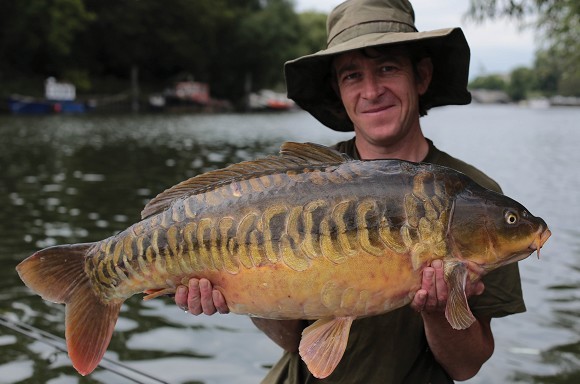
Revealed: Terry Hearn's biggest asset!
CARPology asks: What do you think is your biggest asset: being able to read the weather and the environment around you, or knowing the perfect place to present your hookbait? Terry Hearn answers...
I hope that I have a fair idea about both, but I guess that if I had to choose one strength it would be the ability to read the weather and the environment around me. This is probably even more so when it comes to the winter months, when it’s important to foresee and make the most of any short mild spells.
“A good example would be from my time on a 90-odd-acre pit local to home, which I did a couple of winters on in 2006/07 and 2007/08. At the time it was a very quiet pit which for the most part I had to myself, simply because it always had such a poor winter track record, but those two winters turned out to be the mildest on record for many, many years and so my timing couldn’t have been better.
“I used to pay a great deal of attention to the wind direction and with the on-going mild weather I nearly always found that the fish were down the windward end of the pit. To be more accurate they weren’t right on the end of the wind, they were kind of on the wind but at the same time off it.
“The pit is pretty much rectangular in shape, facing up the compass, and about two thirds of the way up the lake there are a couple of features that provided protection from the wind. On one bank there was a thin, cigar-shaped island jutting out into the lake and on the bank dead opposite, there was a marshy point which also stretched a fair distance out into the lake. If you imagine that a southerly wind pretty much blew straight up the length of the lake then hopefully you can also picture that behind the island and the point, there were small areas of water protected from the winds, little bays that were flat calm. Twenty yards out, the water would look more like the sea with white-capped waves rolling down the full length of the pit. So the carp would be down the end that the wind was blowing, but off the wind in these small sheltered areas.
“It was important to be fishing these areas on the right wind directions, and over time I’d got it all worked out. Anything with south in it was fine, no matter how strong the wind was, there would always be these areas of calm water. If it was blowing a westerly then I could just about get away with fishing my swim behind the point. Although the area of calm water was much smaller, fish would still hold up there. But, if the wind turned to a northwest it would funnel straight in and it always went dead in such conditions.
“I’d actually built my own swim in this area which was very low to the water, and when the wind spun round to a northwesterly I’d have to get out of there quick time!
“One night I fished it and I knew the wind was going to be picking up in strength and swinging round to a northwesterly, but I’d been getting action so I wanted to stay in there as long as possible. Metcheck was really accurate that winter and I knew the wind was due to change around 2am, in fact I actually had a bite at 1am, just before the wind swung round. Anyway, by 2am the waves were crashing into the swim and I had to quickly get the fish out of the sack and photograph it on the mat, before then moving the bivvy and all my stuff over a high bank directly behind the swim for shelter.
“When I got up in the morning and took a look over the mound, my rods were all buckled in the rests, branches everywhere, with thick rafts of weed in the swim ripped up by the undertows – absolute carnage!
“So yes, understanding the weather and relating it to the areas you’re fishing can be pretty important.”




